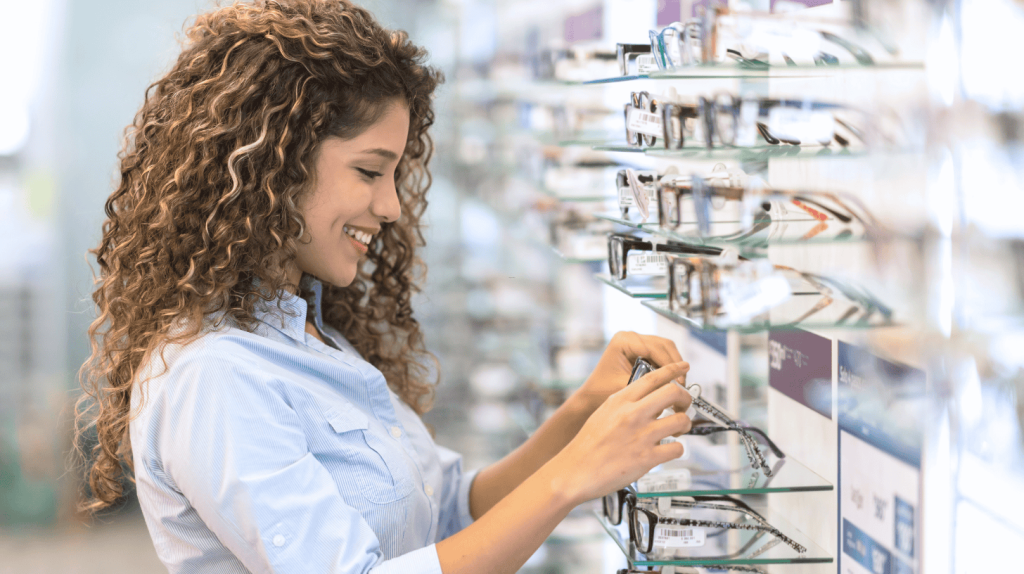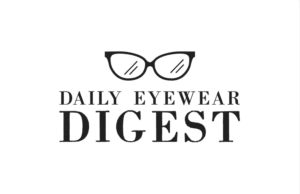A Transparent Question
We’ve all heard the saying “the eyes are the window to the soul.” It’s a poetic way of saying that looking into someone’s eyes reveals their true character and emotions. But what happens when you place a pair of frames between those soulful windows and the world? Do glasses act like decorative curtains, high‑tech window upgrades or maybe even protective storm shutters? In this light‑hearted guide, we’ll explore the history, benefits, drawbacks and cultural quirks of wearing glasses. From medieval rivet spectacles to modern polycarbonate safety goggles, you’ll see why eyewear has become an essential — and sometimes hilarious — part of human life.
Why We Need Glasses in the First Place

A Brief History of Spectacles
- 13th‑century Italy and rivet spectacles. The College of Optometrists notes that the earliest form of spectacles was invented in northern Italy in the 13th century. These “rivet spectacles” were simply two lenses riveted together at the ends. They had no sides and were held in place by pinching the nose. Keeping them on required staying relatively still or supporting the lenses with one’s hand — not ideal for a busy monk or merchant.
- Sixteenth‑century nose spectacles. By the early 16th century, “nose spectacles” were in common use. They had a bow‑shaped bridge, often made of flexible leather or whalebone, and could correct both long and short sight. Spectacles were still typically held in place by hand and used only for brief reading sessions.
- Temple glasses: the prototype of modern eyewear. Modern eyeglasses didn’t appear until the 18th century. London optician Edward Scarlett introduced “temple” frames with arms to grip the head. These arms made continuous wear possible and paved the way for bifocals and other innovations.
- Pince‑nez and fashion. In the 19th century, pince‑nez (“pinch the nose”) glasses became popular. They were held on by spring tension and were often connected to clothing by a cord to prevent falls.
- 20th century mainstream adoption. The 20th century saw glasses become widespread thanks to cheaper production, insurance subsidies and national health services. Fashion frames emerged, plastic lenses made eyewear lighter and rimless designs gave glasses a stylish makeover.
From clunky rivets to stylish frames, glasses evolved from a curious invention into a functional fashion statement. These historical milestones show that glasses have long been more than mere tools — they’re cultural artifacts that reflect advances in science, technology and style.
The Global Need for Corrective Eyewear
Glasses aren’t just quaint accessories; they are vital for billions of people. The World Health Organization (WHO) reports that at least 2.2 billion people worldwide have near or distance vision impairment. Nearly 1 billion of those cases could have been prevented or remain unaddressed. The major causes include uncorrected refractive errors (88.4 million cases) and cataracts (94 million cases). Yet only 36 percent of people with distance vision impairment due to refractive error have access to appropriate spectacles.
These statistics reveal the tremendous global demand for glasses. Without them, many people struggle with daily activities, education and work. In other words, glasses help keep our “soul windows” clear and functioning.
How Glasses Work
Glasses correct refractive errors such as myopia (near‑sightedness), hyperopia (far‑sightedness), astigmatism and presbyopia. Lenses bend (refract) light to focus images on the retina.
- Convex lenses correct farsightedness by converging light rays.
- Concave lenses correct nearsightedness by diverging light rays.
- Cylindrical lenses correct astigmatism by focusing light unevenly.
- Multifocal lenses (bifocals, trifocals or progressives) combine multiple prescriptions for different distances.
Materials: From Rock Crystal to Polycarbonate
Early lenses were made of rock crystal, quartz or glass, but modern lenses come in a variety of materials:
- Plastic (CR‑39) is lightweight and inexpensive but can shatter.
- Polycarbonate is shatter‑resistant and provides UV protection; it’s often used for children’s glasses, sports goggles and safety eyewear.
- High‑index plastic allows for thinner lenses for strong prescriptions.
- Glass offers excellent optical clarity but is heavy and brittle.
With technology, lenses can also include anti‑reflective coatings, blue‑light filters and photochromic tints that darken in sunlight.
Glasses and Personality: Stereotypes, Perceptions and Cultural Differences

Do Glasses Make You Look Smart?
Popular culture often portrays glasses as the hallmark of nerds and intellectuals. But the effect varies by culture and context. A study published in Cureus examined how college students in Jordan perceived people with glasses. It found that participants rated pictures of people without glasses higher in attractiveness, confidence and intelligence. Interestingly, participants who wore glasses themselves tended to rate images of glasses wearers higher. The authors suggested that cultural norms and ethnic background influence whether glasses are seen as a sign of intelligence or social status.
In Western countries, glasses are often associated with intelligence, competence and honesty. Research summarized in psychology articles notes that individuals wearing glasses can be perceived as more credible in professional settings. It’s no coincidence that fictional characters like Clark Kent (Superman) don a pair of spectacles when blending in as a mild‑mannered journalist.
Stereotypes and Stigma
While glasses may add a studious air, stereotypes can cut both ways. Some people perceive glasses wearers as introverted or less attractive. This negative perception may be stronger in cultures where glasses are less common or where visual impairment carries stigma. However, with the mainstream popularity of designer frames and the rise of “hipster” aesthetics, glasses have become a fashion statement rather than a mark of weakness.
A Window to the Soul — with Decorations
If the eyes are the windows to the soul, then glasses are the decorative frames, curtains and storm shutters. They’re functional yet expressive, offering glimpses into our personality:
- Frame styles — from chunky retro to minimalist rimless — reflect personal tastes.
- Colors and materials — acetate, metal, wood — allow for creativity.
- Lens shapes — round, square, cat‑eye — evoke different eras and moods.
- Accessories — chains, cords and cases — add flair and convenience.
Glasses allow us to change our appearance without altering our eyes. They can be playful props (think oversized novelty frames at parties) or serious professional tools.
Benefits of Wearing Glasses: More Than Meets the Eye

Clear Vision and Quality of Life
First and foremost, glasses improve vision. Being able to read, drive and recognize faces reduces stress and supports education and productivity. Clear vision also decreases the risk of accidents and injuries.
Eye Protection: Safety Goggles and UV Shields
Glasses aren’t just for clarity; they also protect our eyes from injury and ultraviolet (UV) radiation.
- Impact protection. The American Academy of Ophthalmology explains that protective eyewear should be made of polycarbonate, which resists shattering and provides UV protection. Ordinary eyeglasses may shatter if hit, potentially causing more injury.
- Sports safety. The National Eye Institute says that eye injuries are a leading cause of blindness in U.S. children, but wearing the right protective eyewear can prevent 9 out of 10 sports‑related eye injuries. Polycarbonate goggles, face guards and helmets are recommended because they are impact‑resistant and protect from UV rays.
- UV protection. The NEI also advises wearing sunglasses that block 99 %–100 % of UVA and UVB rays to shield the eyes from sun damage. Too much UV exposure increases the risk of cataracts, macular degeneration and skin cancer on the eyelids.
- Everyday safety. Safety glasses are recommended for home projects involving chemicals, flying debris or projectiles.
These protective roles make glasses more akin to storm shutters or safety railings than mere window decorations.
Fashion and Self‑Expression
Glasses have become fashion accessories. Designers release seasonal collections, and celebrities turn frames into style statements. People choose frames to complement their outfits, face shapes and personal brands. For some, glasses are part of their identity — think of Steve Jobs’ round wire frames or Oprah Winfrey’s bold cat‑eye specs.
Convenience Over Contacts
While contact lenses provide a glasses‑free look, they require daily cleaning and can cause dry eyes. Glasses are low‑maintenance, easy to put on and remove, and less likely to cause infections. They also shield your eyes from wind, dust and bugs (think of them as window screens).
Drawbacks and Myths: What to Know About Glasses

Myths About Weakening Eyes
A common myth is that wearing glasses weakens your eyes, making you dependent on them. In reality, glasses do not weaken your eyes. They correct refractive errors, allowing your eyes to focus properly. Without glasses, you might squint or strain, which can lead to headaches and eye strain. Eye health depends on factors like genetics, age, and eye diseases, not on whether you wear corrective lenses.
Digital Eye Strain and Glasses
In our screen‑obsessed world, some worry that glasses can’t keep up with digital demands. Computer Vision Syndrome (CVS) — also known as digital eye strain — involves symptoms like eye strain, headaches, blurred vision and neck pain. A review in Future Science OA reports that 69 % of adults experience CVS. Long screen time reduces blinking, leading to dry eyes and discomfort. Another review notes that digital screen time is a risk factor for myopia progression and eye fatigue.
While glasses alone can’t eliminate digital eye strain, special lens coatings can reduce glare and blue‑light exposure. The 20‑20‑20 rule (every 20 minutes, look at something 20 feet away for 20 seconds) and proper screen ergonomics are also important.
Glare, Smudges and Fogging
Anyone who wears glasses knows the frustration of fogged lenses in cold weather or smudges from fingerprints. Anti‑fog wipes, microfiber cloths and proper cleaning techniques can help. If you’re a glasses wearer who always misplaces that cleaning cloth, consider attaching it to your keys — think of it as window‑washing equipment for your soul’s windows.
Expense and Accessibility
Prescription glasses can be expensive, especially with premium lenses and designer frames. For people without insurance or with limited resources, this cost can be prohibitive. Remember that the WHO reports only 36 percent of people with distance vision impairment due to refractive error have access to appropriate spectacles. Programs that provide free or low‑cost eyewear are essential, and online retailers and donation initiatives help reduce costs.
Funny Takes: Glasses as Soul‑Window Upgrades
Glasses occupy a unique place in humor and pop culture. Here are some tongue‑in‑cheek ways to think about your specs:
Glasses as Window Frames
Imagine your eyes as windows and your glasses as decorative frames. Choosing a frame shape is like picking a window frame for a house — it can make your “home” look modern, vintage or quirky. Oversized frames? That’s like installing bay windows. Rimless lenses? A minimalist glass house. Tortoiseshell acetate? A Victorian bay window with stained glass.
Glasses as Curtains and Blinds
Do you feel more introverted when wearing dark sunglasses? They’re your blackout curtains. Clear lenses with anti‑reflective coating? Sheer curtains that let in light but reduce glare. Photochromic lenses? Smart blinds that automatically adjust to sunlight. With the right pair, you can control who gets to peek into your soul.
Glasses as Windshield Wipers
Rainy day? Steam from hot soup? Glasses become foggy windshields. Combine them with anti‑fog coatings and they’re like windshield wipers for your face. If only there were a defrost button on our temples!
Glasses as Magnifying Lenses in Detective Stories
Remember Sherlock Holmes with a magnifying glass? Glasses are built‑in magnifiers that help you spot clues. They also help you find your phone when it’s literally in your hand. For those with progressive lenses, reading the fine print on shampoo bottles becomes part of your detective training.
Glasses as Disguises and Reveals
Superman’s disguise hinges on a simple pair of glasses. Comic book logic aside, frames can transform how others perceive you. Remove them and you’re ready for superhero duties. Put them on and you’re the hardworking journalist. Even if you’re not from Krypton, glasses let you explore different facets of your personality.
Choosing the Right Pair: Tips for Frame Shopping

Shopping for glasses can feel overwhelming, but these tips will make it easier:
- Know your prescription. Get an up‑to‑date eye exam before buying new glasses. An accurate prescription ensures crisp vision and reduces eyestrain.
- Consider your lifestyle. If you’re active or prone to accidents, choose durable polycarbonate lenses and flexible frames. If you work at a computer all day, ask about anti‑reflective coatings.
- Face shape matters (a little). Round faces often suit rectangular frames, square faces look good in round or oval frames, and heart‑shaped faces are flattered by cat‑eye or horn‑rim styles. However, rules are meant to be broken — wear what makes you happy.
- Try virtual try‑on tools. Many online retailers offer virtual try‑on features. They let you “try on” dozens of styles without leaving your couch.
- Budget for extras. Consider anti‑scratch coatings, UV protection and blue‑light filters. These add cost but provide extra benefits.
Caring for Your Windows: Eye Health Tips
Maintaining healthy eyes goes beyond buying the right frames. Here are some general tips:
- Wear protective eyewear for sports and hazardous tasks. The NEI warns that regular eyeglasses, sunglasses and contacts don’t protect kids from eye injuries, but most protective eyewear made of polycarbonate can.
- Protect against UV rays. Choose sunglasses that block 99–100 percent of UVA and UVB radiation. Wear a wide‑brimmed hat for additional shading.
- Follow the 20‑20‑20 rule. To reduce digital eye strain, look away from your screen every 20 minutes at something 20 feet away for at least 20 seconds.
- Blink often and use lubricating drops. Blinking keeps eyes moist. Consider artificial tears if you work in a dry environment or wear contact lenses.
- Eat an eye‑healthy diet. Foods rich in omega‑3 fatty acids (like salmon), lutein (spinach, kale) and vitamin C (citrus fruit) support eye health. Staying hydrated also helps.
- Get regular eye exams. Early detection of eye conditions like glaucoma, macular degeneration and diabetic retinopathy can preserve vision.
Glasses, Culture and Identity
Eyewear is deeply woven into cultural identity:
- Fashion icons. From Buddy Holly’s black‑rimmed specs to John Lennon’s round frames and Iris Apfel’s oversized glasses, certain people are inseparable from their eyewear.
- Religious and cultural garments. In some cultures, glasses are integrated into traditional dress. They can be adorned with jewels or carved designs.
- Status symbols. In countries where eyewear is expensive, designer frames may signal wealth and education. Conversely, in some rural areas of developing countries, wearing glasses may carry stigma, leading individuals to avoid them.
- Inclusivity and accessibility. Advocates push for affordable eye care and challenge stereotypes. Programs that deliver free or low‑cost glasses empower students and workers, turning a simple tool into a life‑changing resource.
The Future of Glasses: Beyond Basic Vision
Glasses are evolving rapidly. Smart glasses with built‑in cameras, speakers and augmented‑reality displays are emerging. These devices can assist with navigation, language translation and even wellness monitoring. However, they also raise privacy concerns and highlight the digital divide. As technology advances, our soul‑windows may soon have heads‑up displays and voice assistants.
Conclusion: Let Your Windows Shine
Glasses may be the frames, curtains and even windshield wipers of your soul’s windows, but they are also tools that empower billions of people. They correct vision, protect against injury and UV radiation, and allow self‑expression. Cultural perceptions of glasses vary, yet they continue to evolve as fashion accessories and high‑tech gadgets. Whether you wear them out of necessity or for style, remember that those little frames on your face are not just functional — they’re a celebration of human ingenuity and a quirky, sometimes funny, way to let the world peek into your soul.

